I hoped to find some similarly unexpected treasures this year, and I was not disappointed. My first discovery was this cute little book from 1966:

I love the details of the illustrations, like the little black cat hiding in the doorway on the cover. The interior illustrations are just as detailed, and they draw you in with their cleverness and easy humor. The more you look at them, the more you find to love! A wonderful little book, and a bargain at 3 bucks.
Another great kids’ book that my mom grabbed while we were there is this pop-arty gem from 1970:
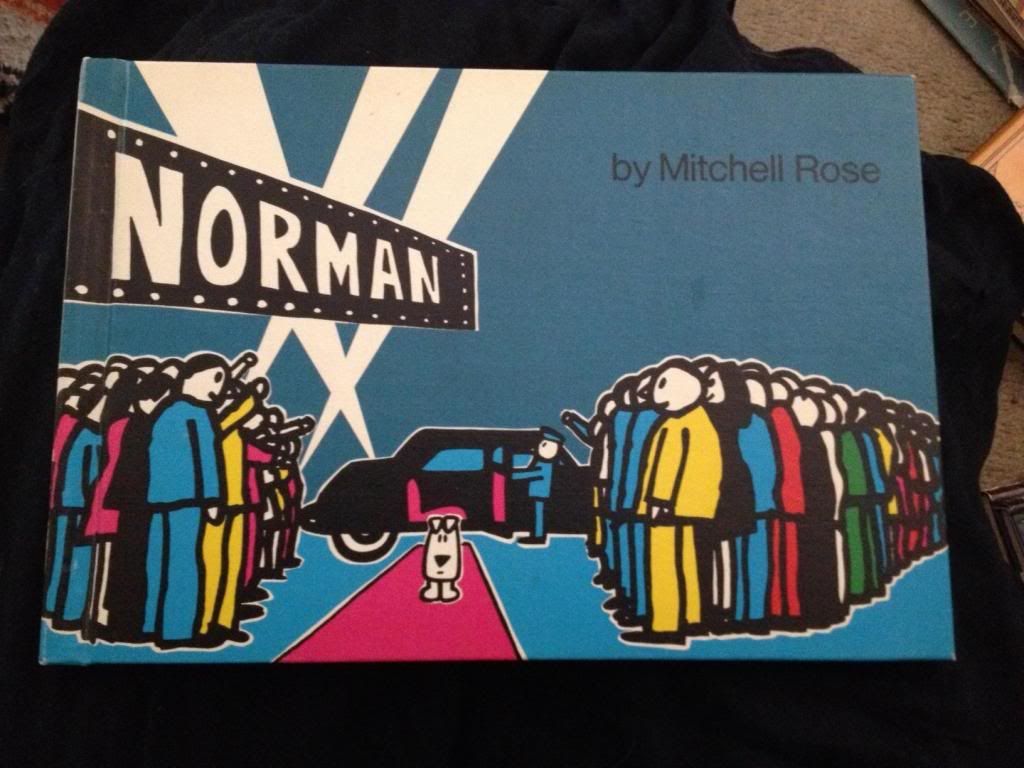
It’s a tongue-in-cheek story that grown-ups can appreciate as much as kids, about a talking dog named Norman. When humans discover he can talk, Norman becomes a media sensation and celebrity, even performing at Carnegie Hall! However, he learns that fame is fleeting (his agent tells him, “People aren’t interested in talking dogs this year. They want to see mice that play banjos”) and decides he’s happier going back to life as a normal dog with a family that loves him. The art is colorful, graphic, and fantastic, and the story is a good one. Nice pick, Ma!
Our next rare-or-unusual find was yet another children’s book. The Adventures of Paul Bunyan & Babe, published in 1958, has more charming illustrations and clever arrangements of the text:

The story is told in a series of mini poems, with funny footnotes and illustrations in light brown to add to the rhymes. I was amused by poem 13, among others:
And – for an extra snack -
He ate a hundred meese or two,
Like peanuts from a sack.
That kind of goofy silliness fits the tall-tale genre of the story, and it’s a very fun read.
At that point we moved out of the kids’ picture books division and into older books. I fell in love with the cover of this one:
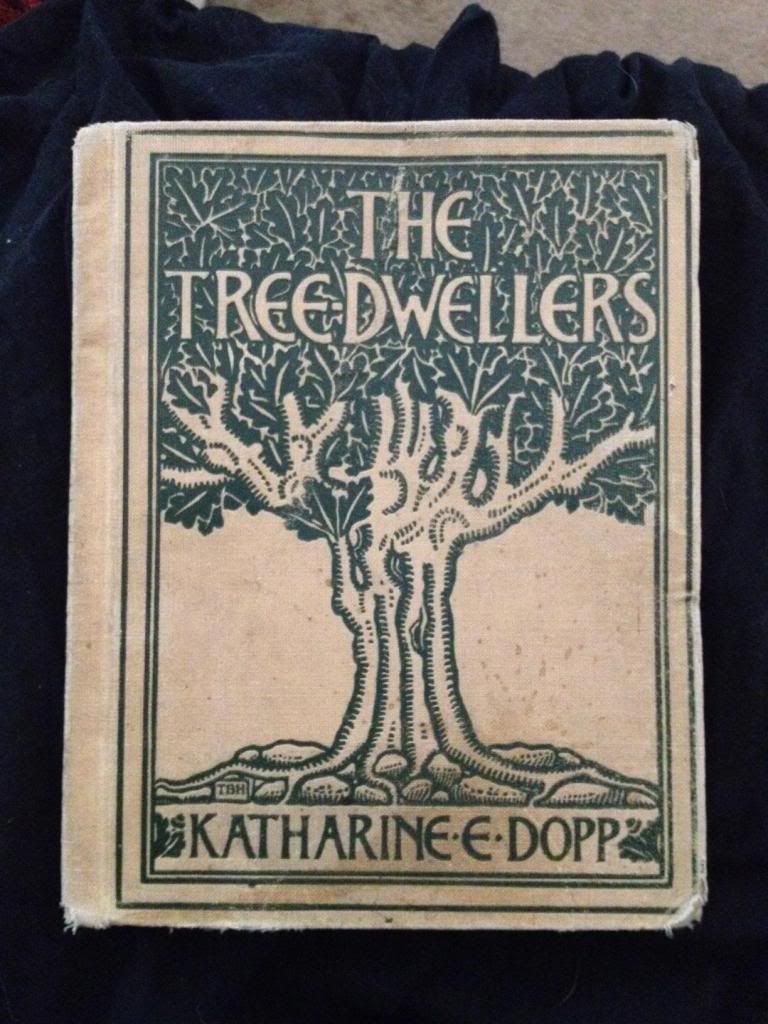
This one was published in 1904, and was used in some way to teach children about the evolution of humans from pre-history, judging by a skimming of the preface, the discussion questions sprinkled throughout, and the repeated handwritten inscription of “Property of Badwater School.” It’s a rather strange little book—I can’t tell if it’s supposed to be a fictional account of the lives of some prehistoric people based on facts (such as they were in 1904, at least), or what. Not what we’d consider a textbook today by any means, but even more interesting because of that.
Another survivor from the early days of the 20th century is Woodland Tales, published in 1925:
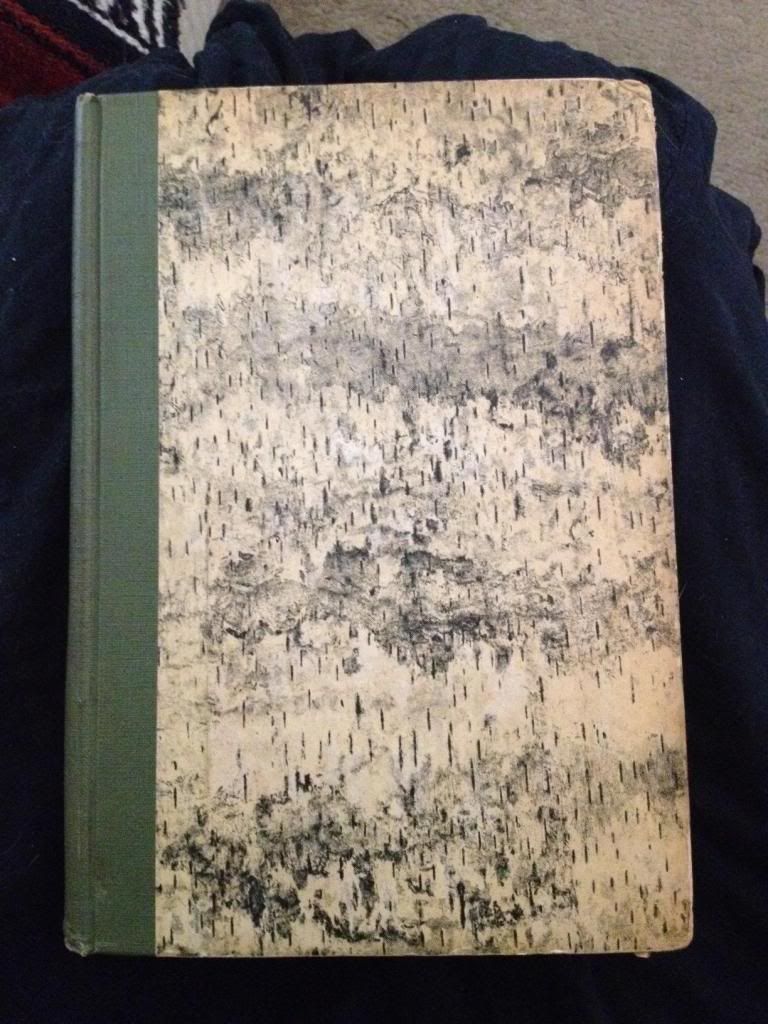
The author describes the stories included in the book as “Mother Carey tales.” That meant absolutely nothing to me, so I turned to my friend Wikipedia, who tells me that Mother Carey is “a supernatural figure personifying the cruel and threatening sea in the imagination of 19th-century English-speaking sailors.” That doesn’t really seem to fit in with the subject matter of this book (woods, not seas), but other info in the Wiki entry suggests a broader interpretation of this, noting that she has appeared as a fairy in stories. This book is a collection of fairytales, fables, just-so stories, folklore, and practical knowledge of the natural world that, according to the author, is intended to share his love of the forest and woodcraft. I adore this book—I feel like it was made just for me! Beyond the stories themselves, I love the birch bark look of the cover and the interior illustrations. They remind me of the work of Arthur Rackham and Charles Vess, two of my favorite illustrators.
I also love this Art Nouveau treat from 1902:
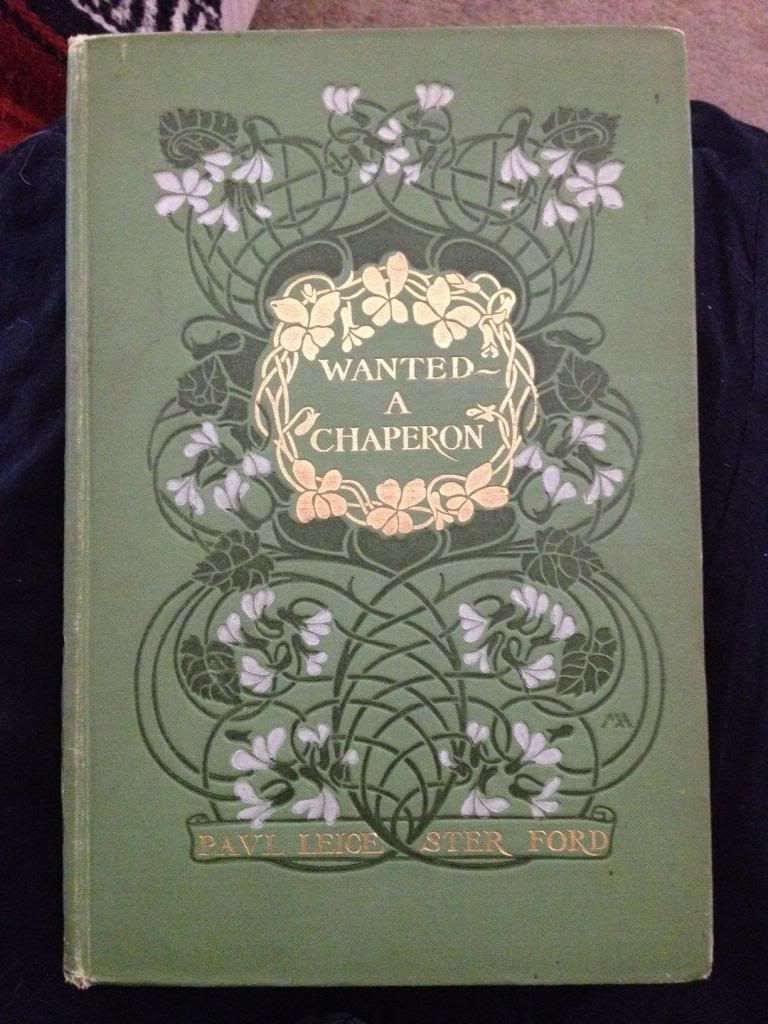
I love Art Nouveau design, and this book is beautiful. There’s color on every page, and there are full-color plates protected by tissue-thin overlays. And the title is pretty funny, too! The whole package speaks to a different time, and I love love LOVE it. There aren’t too many books made like this nowadays.
To step even FURTHER back in time, here’s one published in 1897:
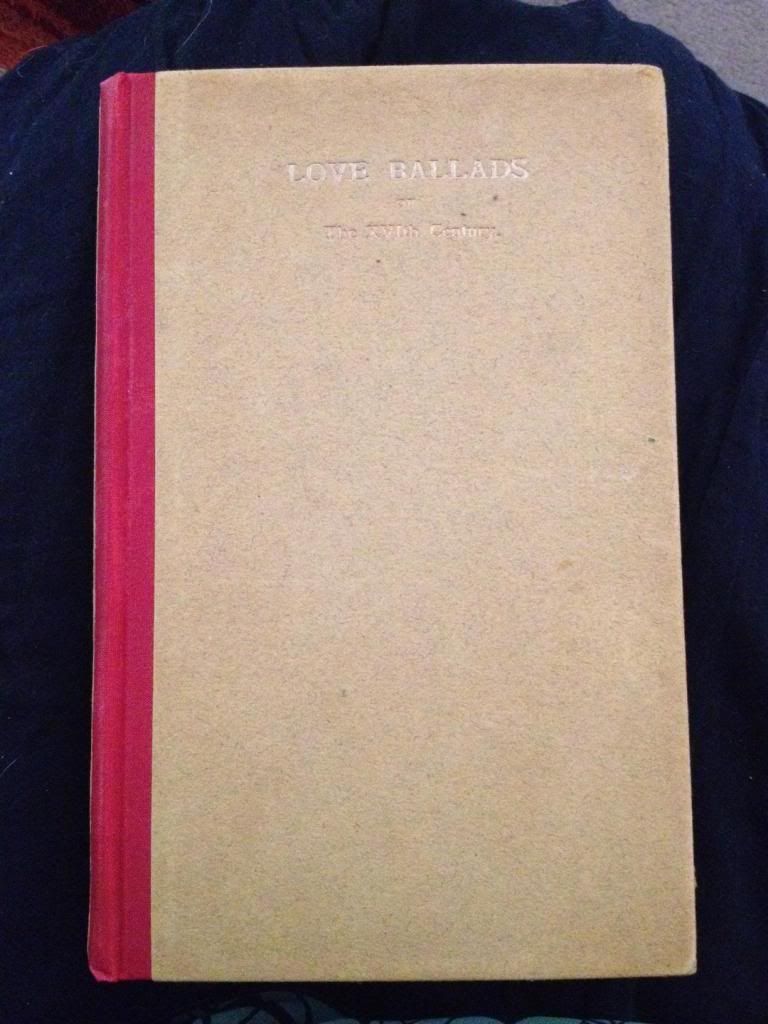
This book is both gorgeous and confusing. Love Ballads of The XVIth Century was printed in 1897, not the XVIth century, although the paper, layout, and the way the book was produced seems to have been done in the style of an earlier period. There is a short note from the publisher to the reader that I found to be quite fitting, given my appreciation in 2014 of a book published in 1897 to memorialize something written in the 1500s:
“No one nowadays writing in a style similar to that in which these Songs are composed could hope for literary recognition. But representing an age now past and a taste that once was considered ‘the highest’ the work is worthy of preservation. Perhaps our literature, too, will sometime become a lure for the curious—valued only by collectors of those strange things on which Time has placed its seal.”I wouldn’t say it’s valuable solely because it’s old, because the book itself is a work of art and I’ve enjoyed what I’ve read of the poems, too. The paper is thick and looks like it could be handmade, and some of the pages haven’t been cut at the top to separate them. I don’t know how it was printed, but some of it looks kind of letterpress-y, and the colored ink and gold accenting the dropcaps of some of the poems look like they could be done by hand (the color and gold mysteriously stop decorating poems part way through the book). The illustrations following the poems are rather captivating, too. All in all, a very intriguing book! When I searched for information about the Roycroft Printing Shop, I found some stuff about a community of craftsmen and artists in New York state in the late 1800s. Founder Elbert Hubbard was a champion of the Arts & Crafts movement, and it looks like this may be a book produced in his shop. I still feel a bit thrown off by the whole Duke of York thing, though. I found some more bits and bobs of info here and here, but I suspect I may have to turn to the experts for greater detail. To the Antiques Roadshow!!!
Last but not least is a small booklet containing a poem that my mother picked up:
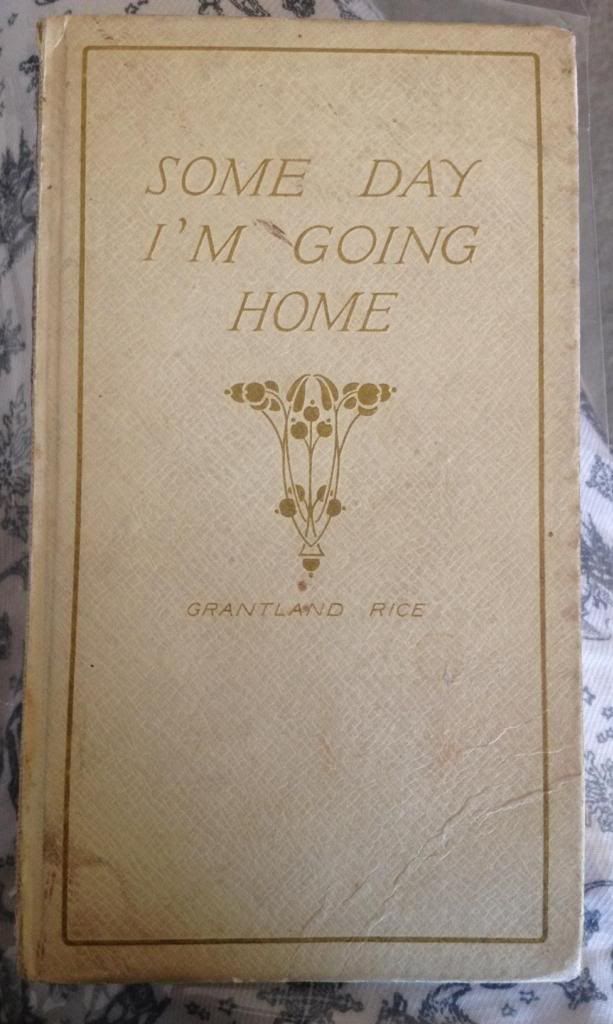
A beautiful piece of art from 1914. I would love to know the stories behind all of these books! I guess someday we really will have to make the trip to the Antiques Roadshow and find out more.
Do you have any cool old books? Any books you appreciate for more than the story they contain? Hit up the comments and let us know!







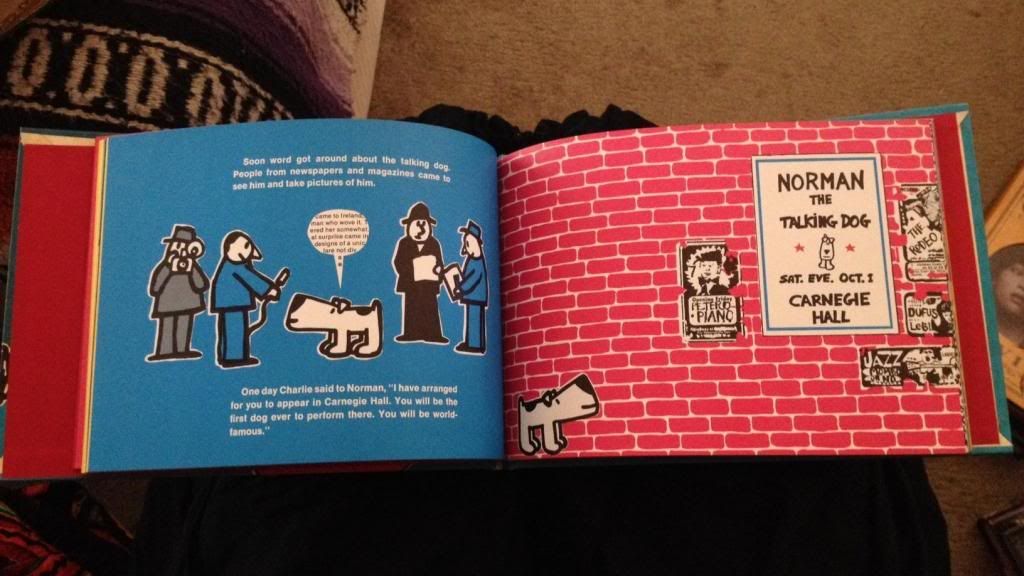
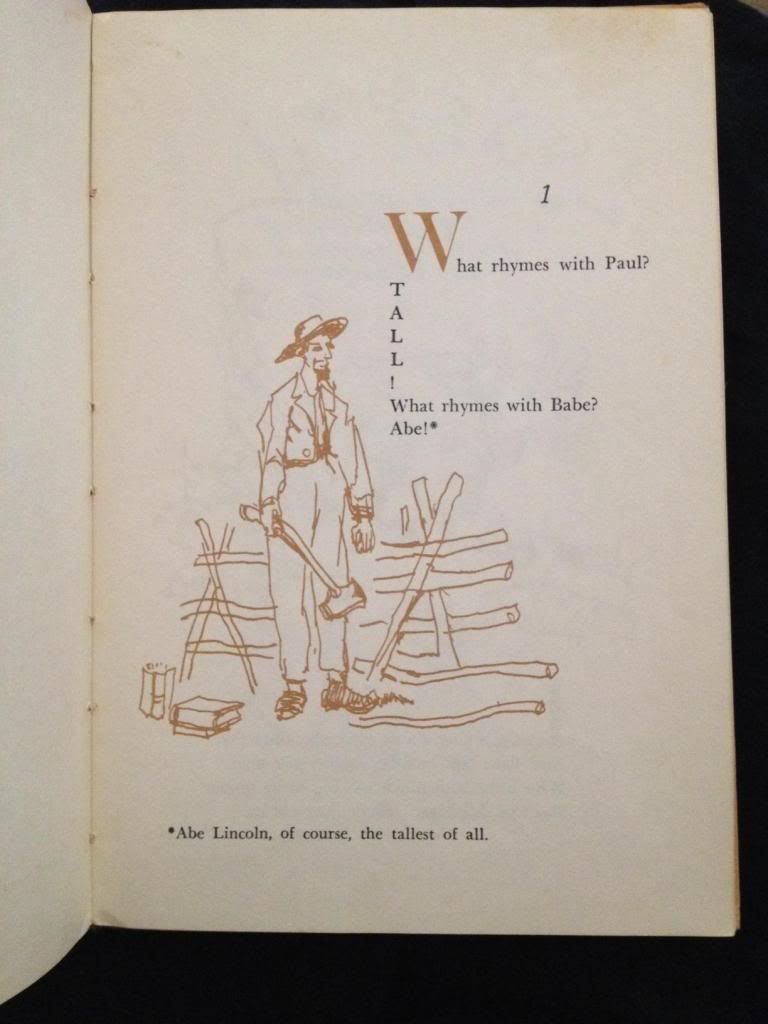

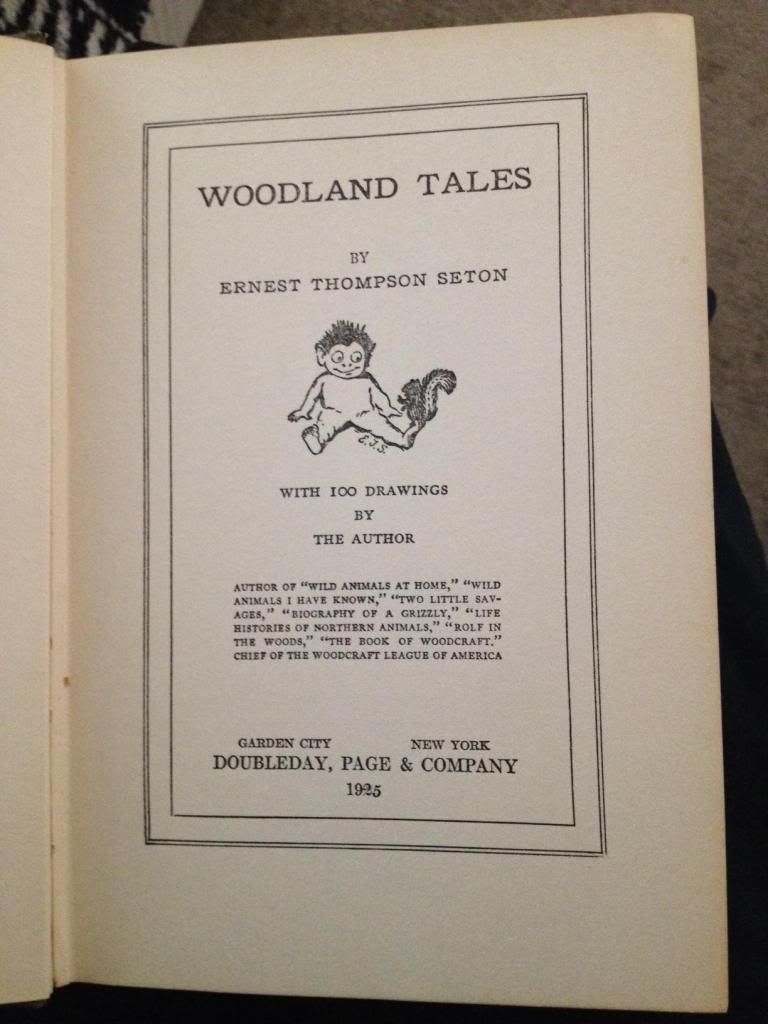
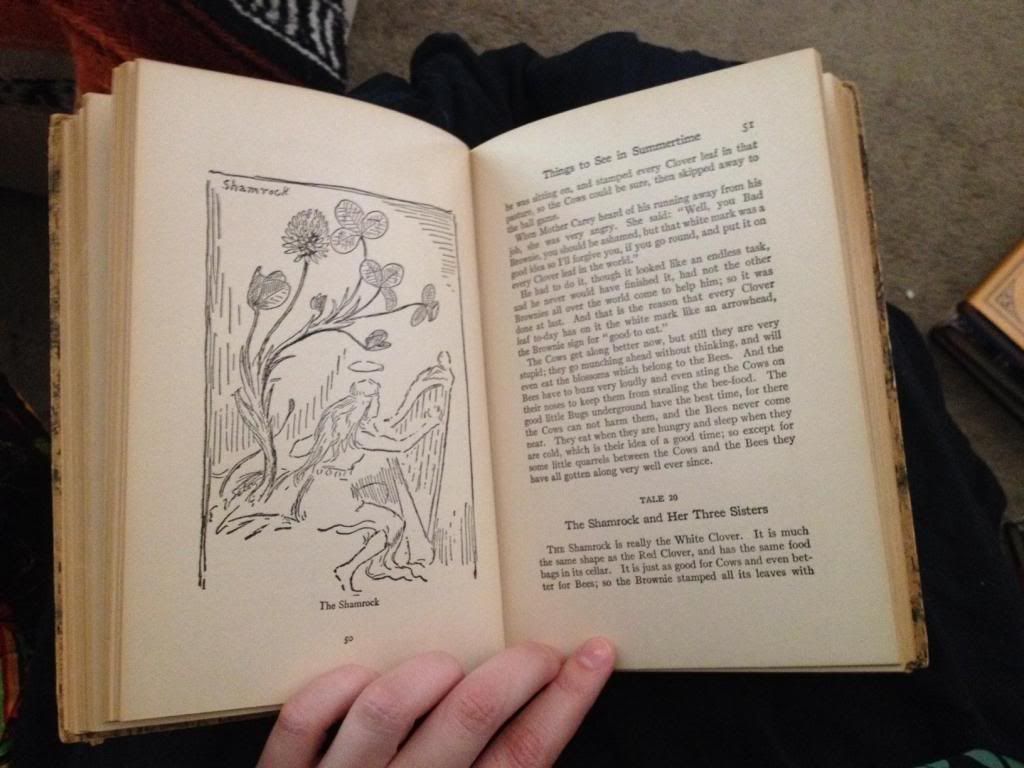


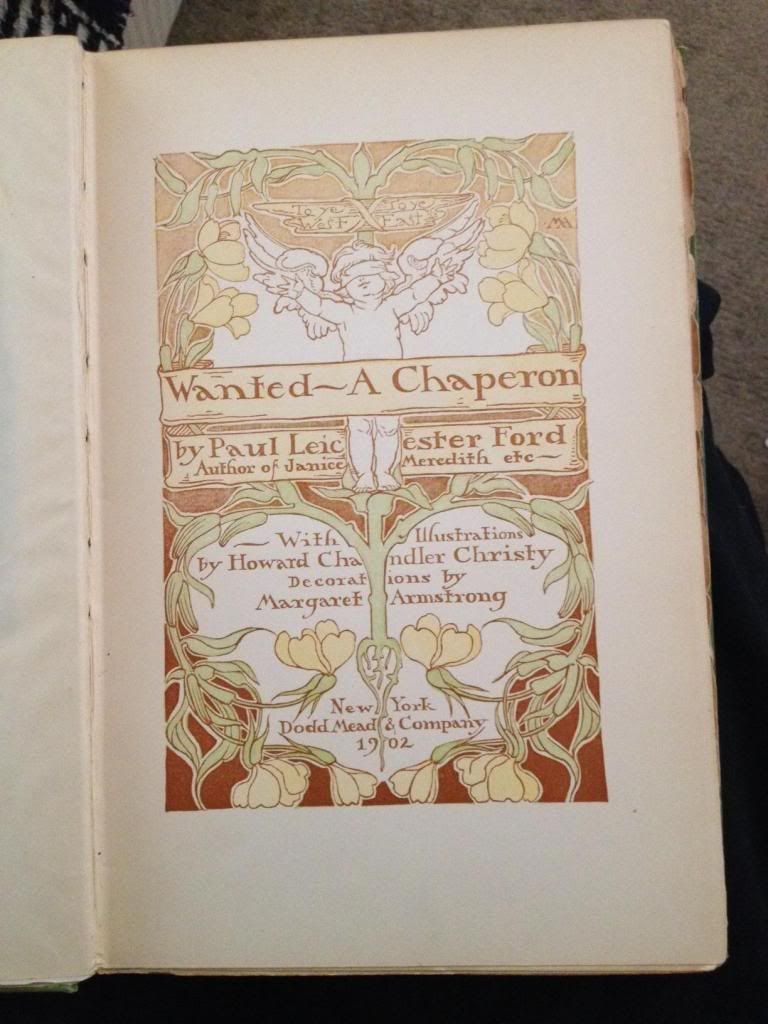
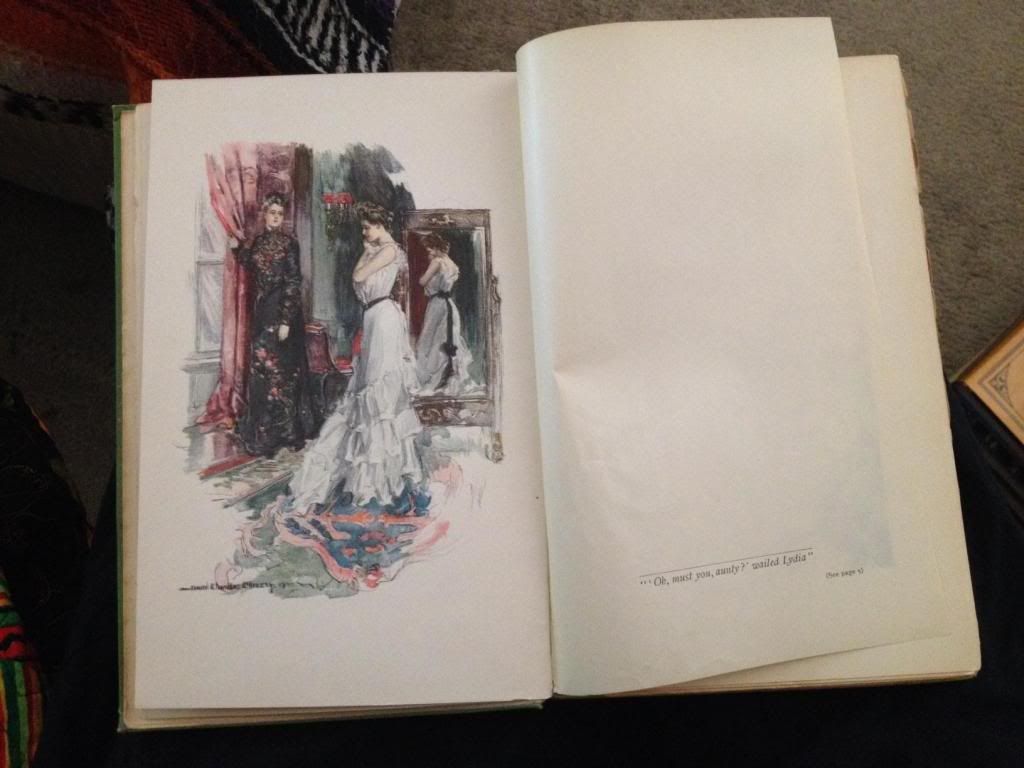
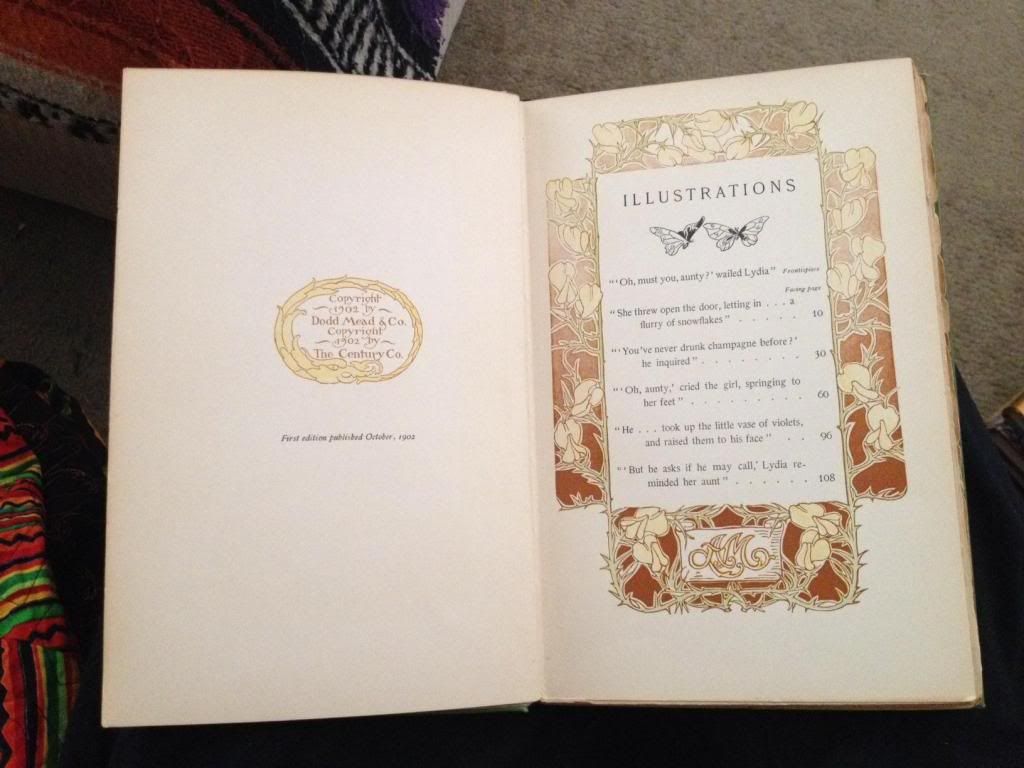


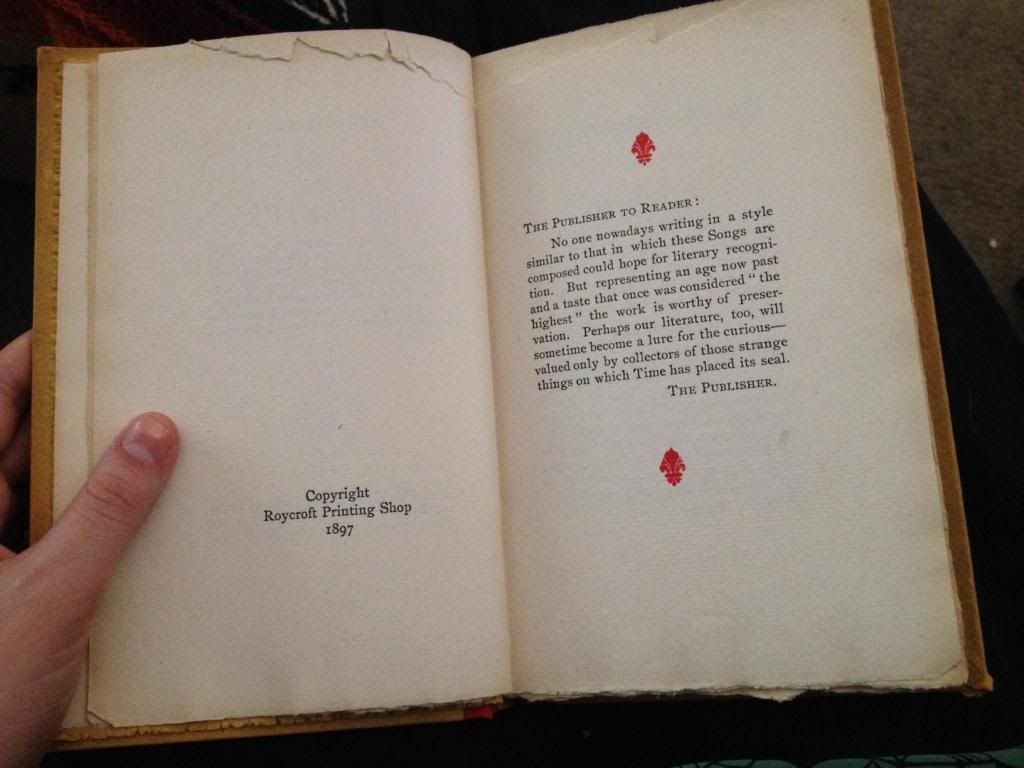
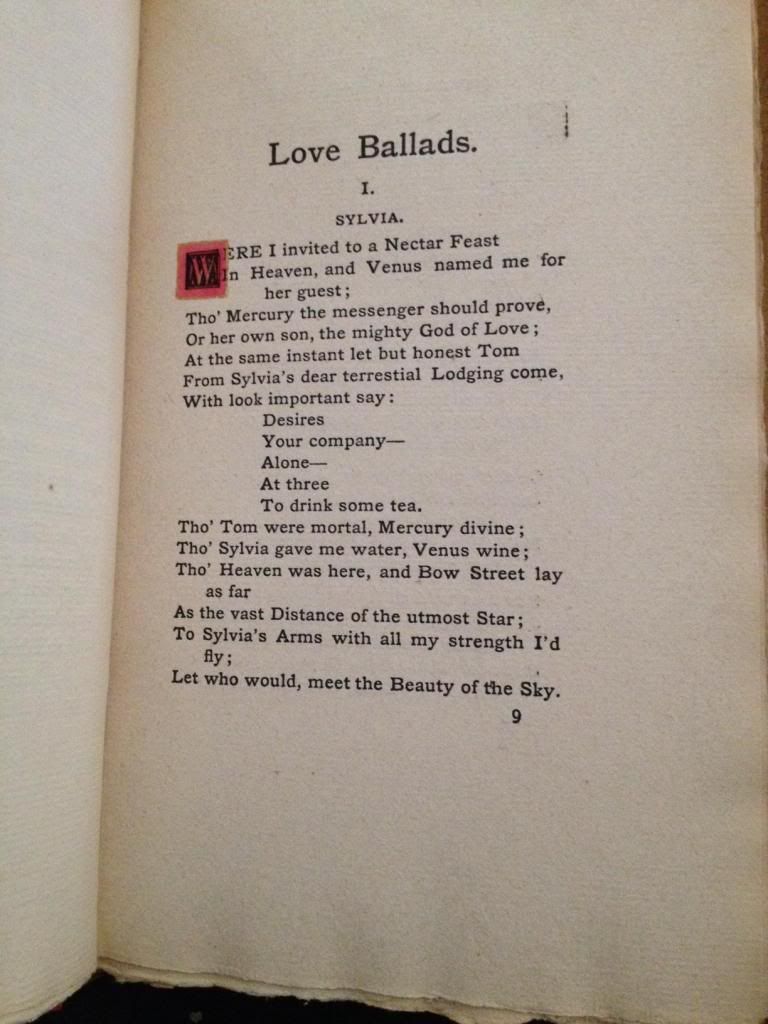
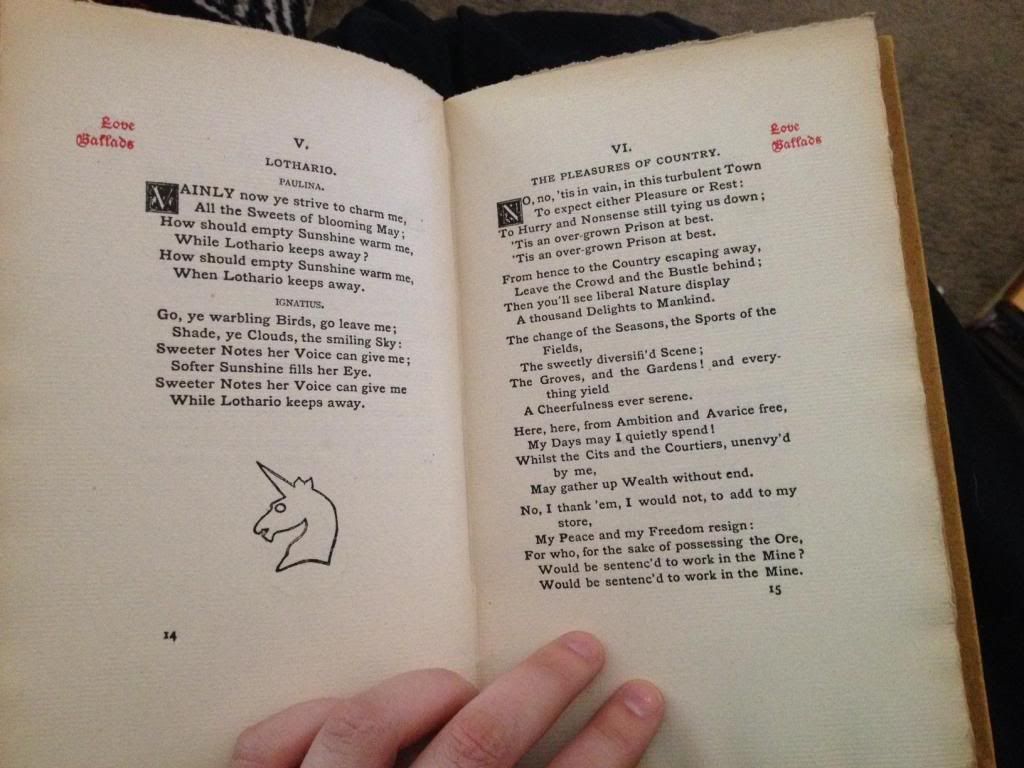
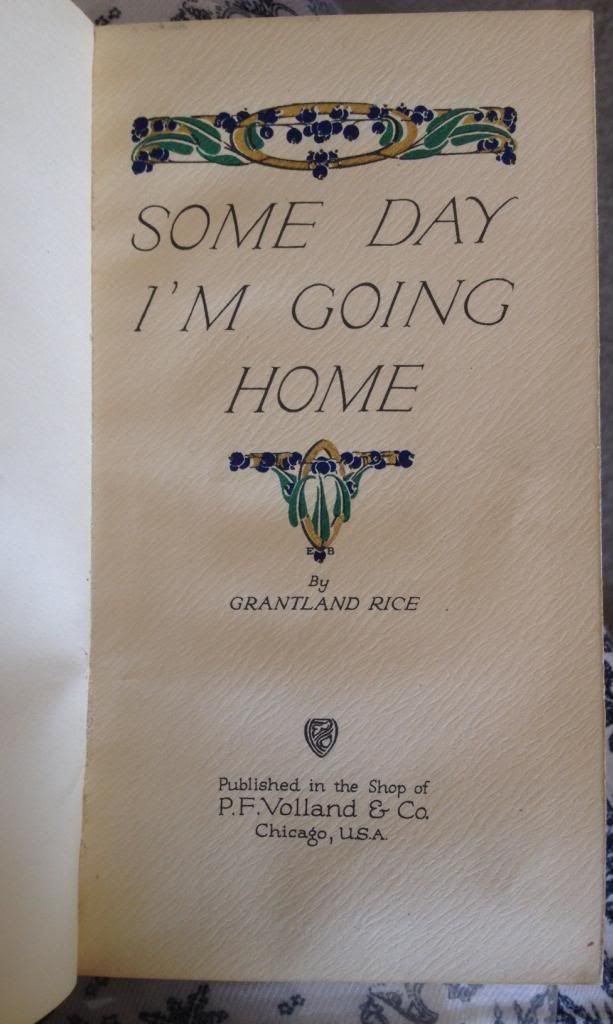
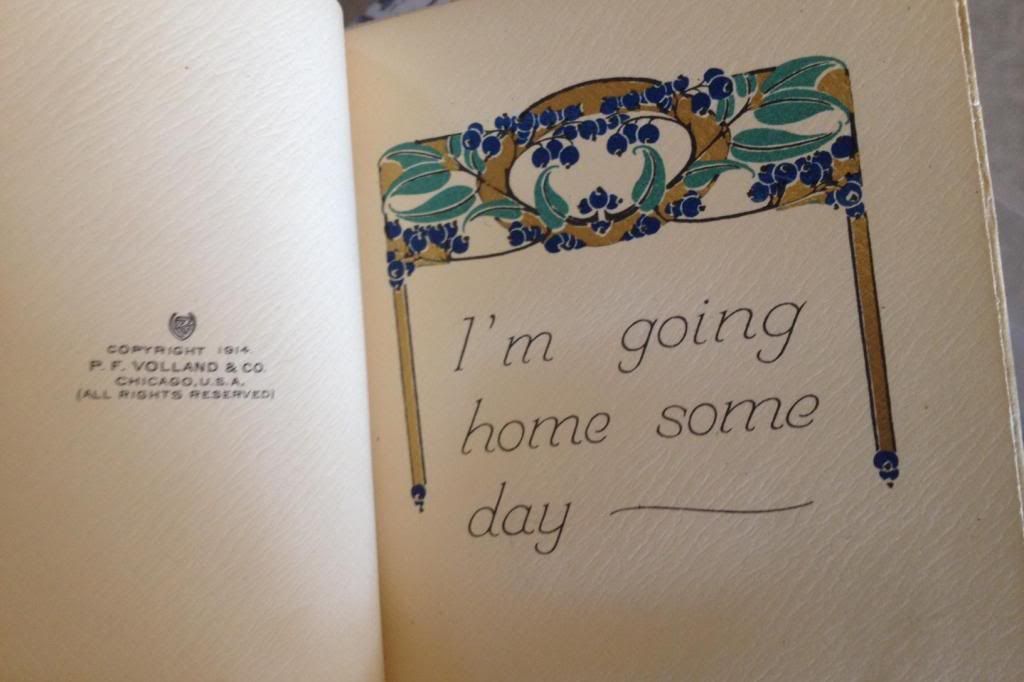
No comments:
Post a Comment